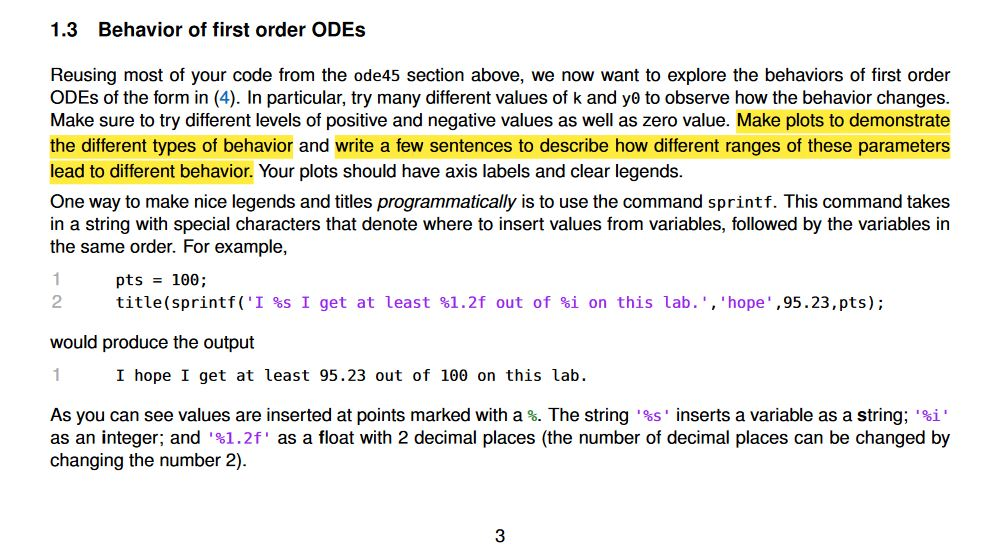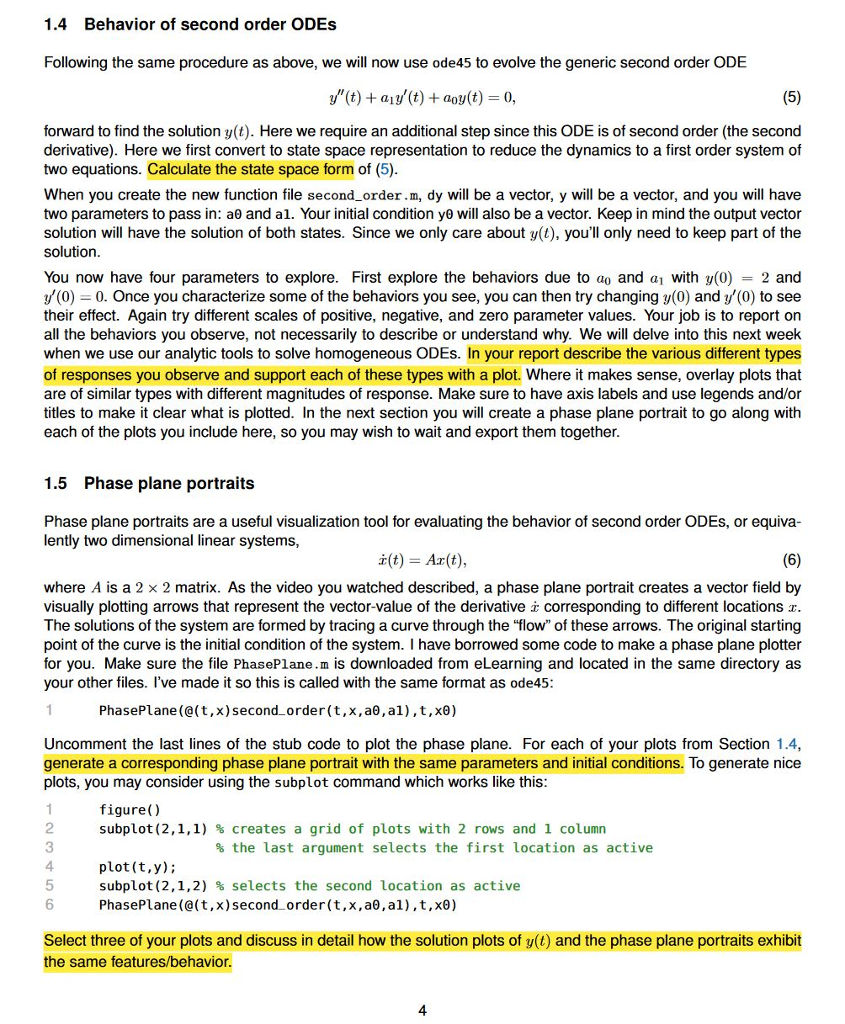Question
Hello I need a MATLAB help, Am working on my Systems and Controls exercise where we are analyzing first and second ordinary differential equation (ODE)
Hello I need a MATLAB help, Am working on my Systems and Controls exercise where we are analyzing first and second ordinary differential equation (ODE) using ode45. We are suppose to create a function named second order for the main code to call. I am having trouble with that and your help would be greatly appreciated . I have copied the functions code at the bottom of the main code. I will attach the instructions and my code below, Thank you.
%% Behavior of second order ODEs % y'' + a1*y' + a0*y = 0 % x' = Ax
T = 10; % the duration of the simulation a = [1,1]; % the parameter for the linear model: y'' + a1*y' + a0*y = 0 y0 = [1,1]; % the initial values of y and y': y'(0) = y0(1), y(0) = y0(2) t = linspace(0,T,Ns(j)); % initialize the time vector y = zeros(2,Ns(j)); % initialize the y vector y(1) = y0(2); % set the initial value of y to y0 figure(3); % opens a new figure indexed 3 [t,y] = ode45(@(t,y)second_order(t,y,a1,a0,y0),t,y0); plot(t,y,'LineWidth',2); title(sprintf('Numerical Integration')); legend('N=10','N=25','N=50','N=100','N=500','N=1000','ode45'); legend('Location','best'); xlabel('t'); ylabel('y(t)');
function dy = second_order(t,y,a1,a0,y0) A =[0 1;-a1 a0];; end


Step by Step Solution
There are 3 Steps involved in it
Step: 1

Get Instant Access to Expert-Tailored Solutions
See step-by-step solutions with expert insights and AI powered tools for academic success
Step: 2

Step: 3

Ace Your Homework with AI
Get the answers you need in no time with our AI-driven, step-by-step assistance
Get Started


